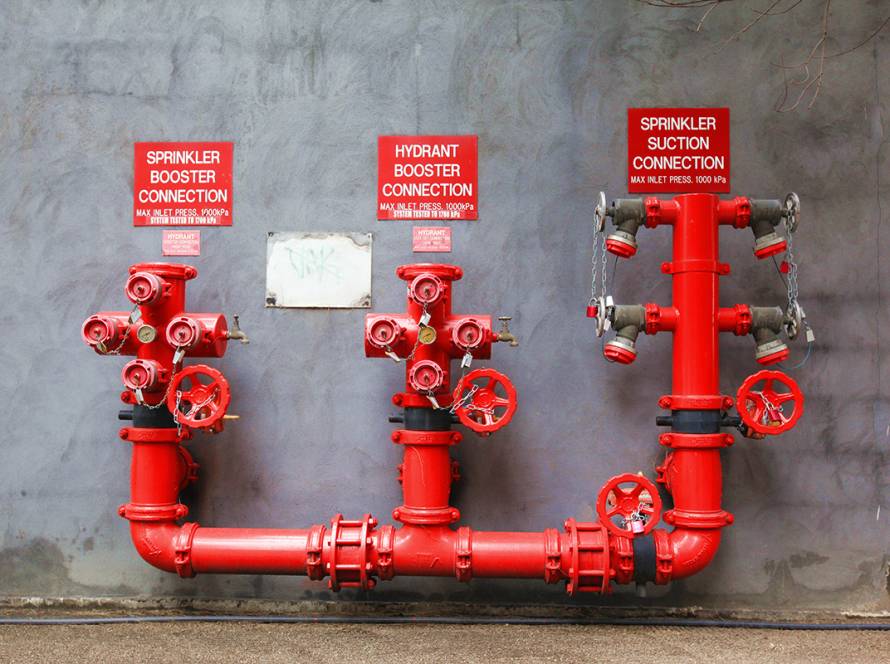Queensland, with its unique climate and diverse landscapes, faces specific challenges when it comes to fire prevention and management. To address these fire risks, rigorous regulations have been put in place to ensure the regular testing and maintenance of fire hydrants.
This guide will explore the various fire hydrant maintenance tests required and delve into the reasons why these tests are crucial for safeguarding lives and property.
Understanding Fire Hydrant Regulations
The Queensland Development Code MP 6.1 – Fire Hydrant Installations, outlines the specific requirements for the design, installation, and maintenance of fire hydrants across the state. This code is in line with the broader objective of the Building Act 1975 under section 30, all of which emphasise the paramount importance of fire safety in buildings. All hydrant systems also need to comply with AS1851 for maintenance inspections and the relevant design approved during construction.
Routine Inspection and Testing
Routine inspection and testing of fire hydrants are fundamental aspects of their maintenance. Building owners and managers are responsible for ensuring that fire hydrants are inspected and tested regularly. This typically involves a visual inspection to identify any visible damage, leaks, or obstructions. Additionally, functional tests are conducted to verify the hydrant’s operational efficiency. Fire hydrants should undergo routine visual inspections at least once every 6 months.
Hydrant Flow Testing
One key aspect of routine testing is flow testing. Flow testing, which measures the water flow rate from the hydrant, is typically conducted annually. This involves measuring the water flow rate from the hydrant to ensure it meets the specified standards. Adequate water flow is essential for effective firefighting, and regular testing helps identify any issues that may compromise this crucial factor. In the case of multiple fire hydrants, this is carried out on the most hydraulically disadvantaged hydrant and in accordance with the original design criteria. A flow test is also performed on the most hydraulically disadvantaged hydrant every 5 years, with system boosted and flow values recorded.
Pressure Testing
Pressure testing is another critical component of fire hydrant maintenance. The pressure within the hydrant system must be tested to ensure it meets the required standards. This involves pressurising the system and checking for any abnormalities or leaks. Pressure testing is vital for identifying weaknesses in the system that could affect its performance during an actual fire emergency. Pressure testing should be conducted on an annual basis.
Hydrant Valve Operation Tests
The proper functioning of hydrant valves is important for the success of firefighting efforts. The operational efficiency of hydrant valves should be tested annually to ensure they can be opened and closed smoothly. This is crucial for quick and effective access to water during firefighting efforts. This ensures that firefighters can access water quickly and efficiently when needed, without any delays caused by malfunctioning valves. A fire hydrant valve overhaul is also recommended for every five years. This involves rebuilding or replacement of hydrant valves and optionally fire hose reel valves connected to the same system.
Hydrant Chamber Inspection
In addition to inspecting the visible components of fire hydrants, regulations require periodic inspections of hydrant chambers. These underground chambers house important elements of the hydrant system, including valves and piping. Inspecting these chambers helps identify any issues such as corrosion, leaks, or unauthorised interference that may compromise the integrity of the hydrant system. Inspections of hydrant chambers, where applicable, should be conducted annually.
Fire Hydrant Hydrostatic Test for Boosted Systems
A boosted fire hydrant system typically involves the use of pumps or pressure-boosting equipment to enhance the water supply and pressure available for firefighting purposes. The hydrostatic test is specifically focused on assessing the structural strength and water-tightness of the hydrant under increased pressure. This is a specialised test and is only performed by our specialist wet services technicians after valve overhauls have been carried out. This is performed every 5 years.
Fire Hydrant Boost Overhaul
A Fire Hydrant Boost Overhaul refers to a comprehensive and systematic maintenance process conducted on a boosted fire hydrant system. It involves the overhaul of the hydrant booster points and stripping down and rebuilding of booster inlets using new valve washers. This is conducted on a 5-yearly basis.
The Importance of Fire Hydrant Maintenance Tests
The implementation of comprehensive fire hydrant maintenance tests is not merely a regulatory formality; it is a proactive measure to ensure the safety of occupants and protect property in the face of potential fire emergencies. Here are some compelling reasons why these tests are of utmost importance:
Reliability during Emergencies: Regular maintenance tests guarantee that fire hydrants will function reliably during emergencies. In a firefighting scenario, every second counts, and malfunctioning equipment can be the difference between containment and escalation.
Compliance with Regulations: Adhering to strict regulations on fire hydrant maintenance is not just a legal requirement; it is a commitment to ensuring that buildings meet the highest standards of safety. Compliance helps avoid penalties and legal consequences while promoting a culture of responsibility among building owners and managers.
Enhanced Firefighting Capabilities: Well-maintained fire hydrants provide firefighters with the necessary tools to combat fires effectively. Adequate water flow, operational valves, and a reliable system contribute to enhanced firefighting capabilities, reducing the risk of extensive property damage and potential loss of life.
Prevention of System Failures: Regular maintenance tests help identify and address issues before they escalate into system failures. Detecting and rectifying problems during routine inspections prevents unexpected failures during critical moments and extends the lifespan of the hydrant system.
Cost Savings: Proactive maintenance can result in cost savings in the long run. Addressing minor issues promptly is more economical than dealing with major repairs or replacements that may be necessary if problems are neglected.
Wrapping Up
From routine inspections and pressure tests to valve operation checks and water quality assessments, each maintenance test plays a vital role in ensuring the reliability and effectiveness of fire hydrant systems. Building owners and managers must recognize the importance of these maintenance tests not only for regulatory compliance but, more importantly, for the safety and well-being of the communities they serve.

